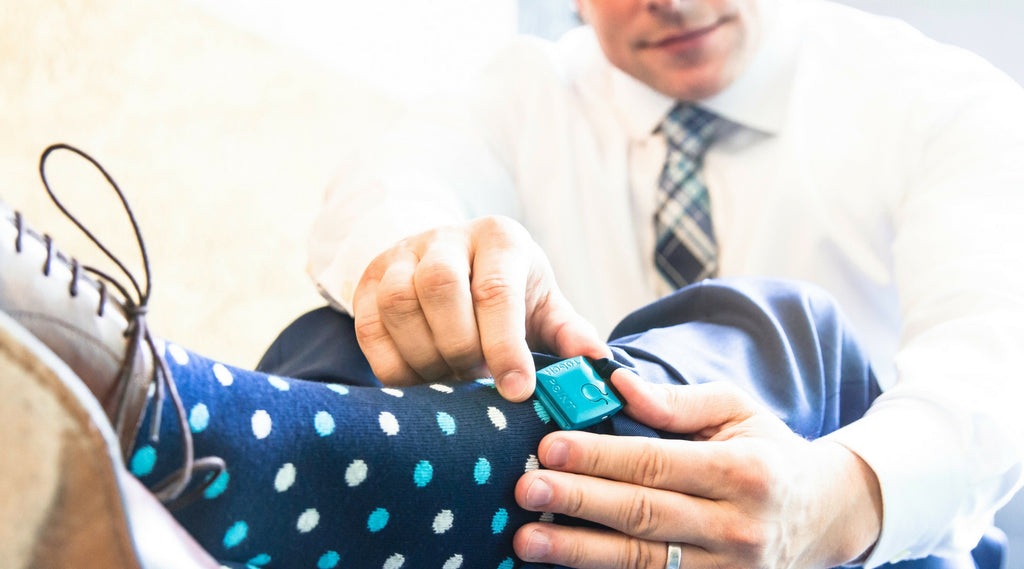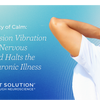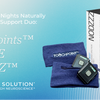TouchPoints™ Applications for Parkinson's Disease

"Holding them [TouchPoints] during "off" periods where I need to lie down does help to relax my muscles more." -Gary Sharpe
Guest Blog by Gary Sharpe of Out-Thinking Parkinson's
What is it like having Parkinson's?
In my pursuit of pragmatic solutions to Parkinson's Disease (I have the Early Onset form myself, diagnosed 8 years ago now), I found myself increasingly researching the nature of stress in humans, and was inevitably drawn towards studying the Nervous System. I learned about the stress responses, fight-flight or freeze, the states of relaxation, and the different neurotransmitters which govern these. I discovered we have many different Nervous Systems in one, including the Central (brain), Sympathetic (fight-or-flight), Para-sympathetic (relaxed), Enteric (gut instinct), and Somatic (free movement), and probably several others too, and that we may consider each one of these as a semi-autonomous "program", which becomes more or less active in response to bio-rhythms and our internal/external environments. As each program is excited or inhibited, this can profoundly affect how we think, feel, move, act and re-act.
I later discovered that the different Nervous Systems can also have their own "sub-programs", separate bunches of nerve fibers arising from different parts of the brain, which take different pathways through the body, with different roles. The Para-Sympathetic Nervous System, for instance, includes the Vagal Nerves and other Cranial Nerves, and these sub-systems may themselves branch in multiple ways too, conveying different information and affecting different parts of the brain and body through their own instruction sets. I learned about how evolutionary biology holds the answers to why each these sub-programs arose and what their roles are in our survival.
I studied how the different functions of our organs, bodies, brains and senses are governed by each of the Nervous System "programs", and indeed that our senses extended far beyond the traditional five senses we are taught at school - in fact, there are whole swathes of senses which come under headings like "propriception", "interoception" and "neuroception". I researched the profound effects that stress has on our bodies and senses, and discovered why, when we are stressed too often, or for too long, this inevitably leads to disease. I learned, however, that stress could be interrupted.
This panoramic perspective recently solidified in my mind, and I now believe that my illness was caused by the atrophy/permanent inhibition of one part of my Nervous System, while another part, the one which causes the Freeze or "Playing Dead" stress response in mammals, became permanently switched on. While there are many factors which may have contributed too this imbalance, I know that, in my case, ingrained chronic stress has had a very major role. I recently wrote up this new understanding of myself as an article " A Complete Explanation for Parkinson's Disease. " I do believe this is the right answer, or close to it, because this explains and predicts, for the first time, all the real life experiences of people with PD, which have never been satisfactorily explained before. But this "big picture" also tells us what we can do to minimize the symptoms. First and foremost, we need to persistently stimulate and practice exercising all that we've lost.
So I began to search for assistive technologies which could help interrupt my own self-stressing behaviours amd help me to remain relaxed and, in doing so, to assist me to rebuild the neurons and neural pathways of my atrophied Para-sympathetic Nervous System, in particular by stimulating my Vagus Nerve and associated Cranial Nerves.
TouchPoints - Wearable Anti-Stress Devices
When I first saw The TouchPoint Solution's viral video on social media, showing how the wearable anti stress devices switched the tremor off in a case of Parkinson's, I immediately wrote to the manufacturers, explaining that their wearable technology should have beneficial applications for Parkinson's and why these could help all people with Parkinson's, whether or not they have tremor as part of their symptoms (I, personally do not suffer from tremor - I have the rigidity dominant form of PD). Indeed, I have high hopes that these Stress Interruption devices will help me prove that in many other neurological problems, such as Alzheimer's and Autism, ingrained chronic stress is one of the fundamental caustive problems. I am glad to say that the good folks at TouchPoint kindly agreed to send me a set for research and evaluation as part of the Out-Thinking Parkinson's project.
My initial trials with just holding the stress relieving devices in my hand did appear to give some benefit. While they did not switch my movement back on, there was a lessening of the symptoms as measured by range of motion testing. I also found that holding them during "off" periods where I need to lie down does help to relax my muscles more.
After a couple of days with the wearable stress relieving devices, I had the idea of holding and moving them directly over the EFT tapping and Cranial Nerve stimulation points on the face, head, neck, shoulder and body. I found this type of therapy quite beneficial, enhancing their affect in calming and relaxing my system. I also tried holding them to areas of my body where pain (dystonia) is the greatest and found an analgesic effect.
However, it is the longer term benefits of using the technology in this way as a daily practice which I believe may have a cumulative Vagus and Cranial Nerve toning effect. leading to more sustained benefits. I will be reporting back on medium and longer term outcomes of pursuing these ideas in due course.
-
Posted in
Parkinson's




